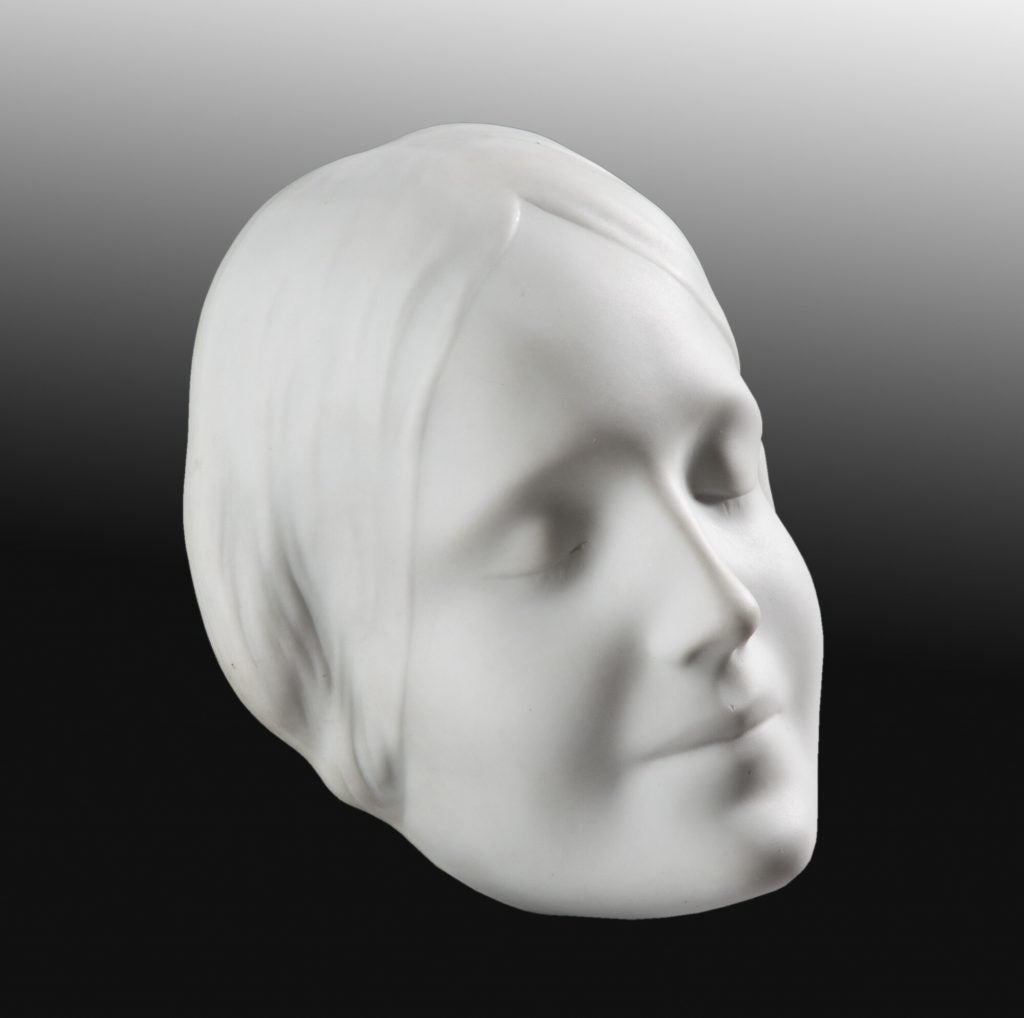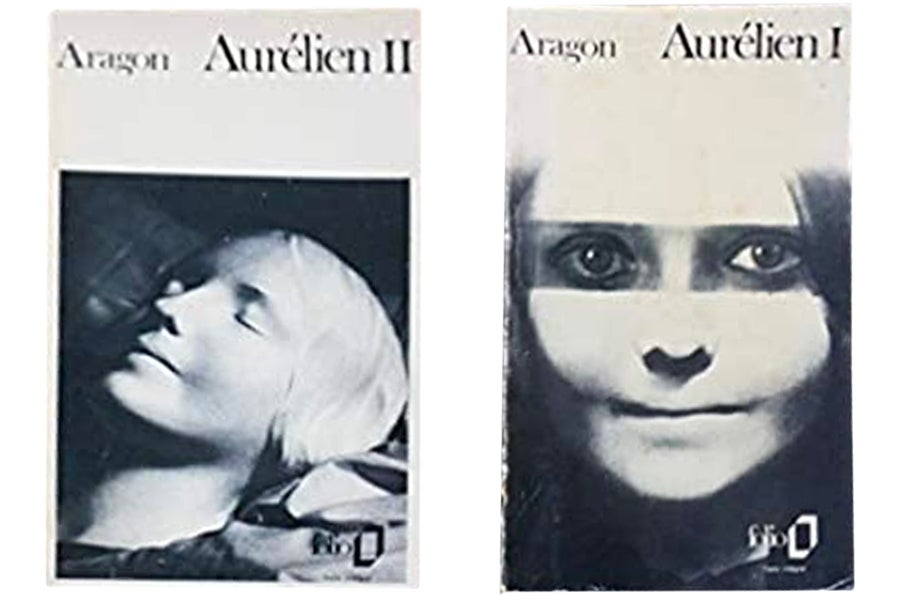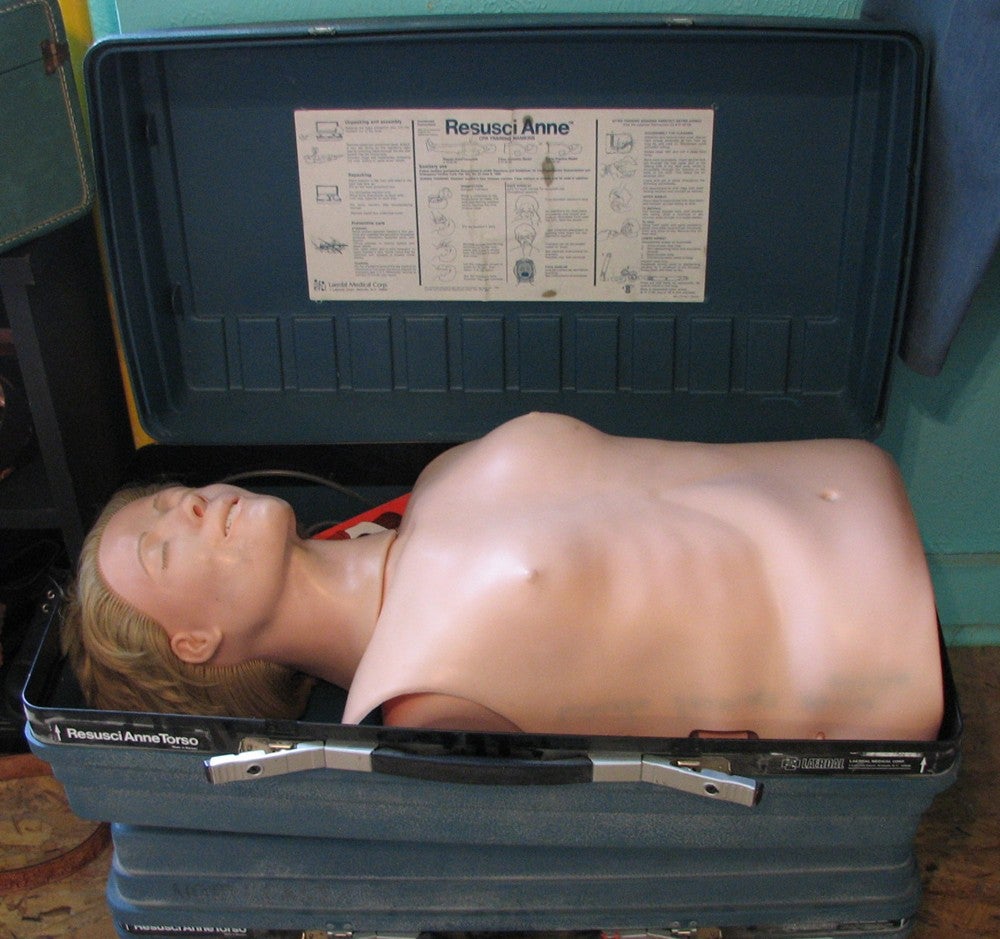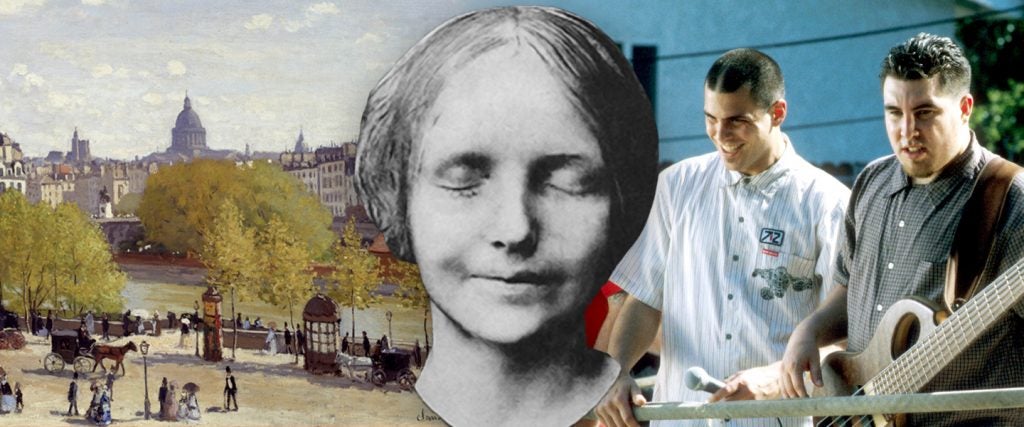Just along from the Louvre in the center of Paris is a quay on the River Seine. Today it’s known as Quai François Mitterrand, after the former French president, but before that it was simply known as Quai du Louvre. One evening in the late 1880s, a young woman slid into the water — whether by accident or design — and drowned.
Nobody knew it at the time, but this unnamed young woman would go on, after death, to be instrumental in the saving of a huge number of lives, as well as — significantly less notably and in a fairly contrived but still worth mentioning kind of way — changing the course of a Riverside, California nu-metal band’s career 120-ish years later.
When her body was pulled from the river, no identifying documents of any kind were found. The standard operating procedure at the time for a situation like this was to place the body on public display at the city mortuary in the hope of identification. Nobody came forward to identify the body, but the pathologist overseeing it became — and it’s worth bearing in mind this was a very different time, but still — entranced by her beauty. It wasn’t unusual for young women to commit suicide in the Seine (hanging was the go-to method for men at the time), but there was something different about her. Unlike most drowning victims, she looked oddly peaceful and serene, as though death had brought her no stress or pain whatsoever.
The pathologist had a plaster cast made of her face. “Death masks,” casts taken from corpses, were reasonably common at the time, made of well-known people for subsequent use producing portraits or statues. He later said, “Her beauty was breathtaking, and showed few signs of distress at the time of passing. So bewitching that I knew beauty as such must be preserved.”

It wasn’t just the pathologist who was fascinated by the dead woman either. L’Inconnue de la Seine, the unknown woman of the Seine, became an unlikely phenomenon in Paris. Plaster cast-makers, or mouleurs, began freely selling likenesses of her face, which became something of a must-have in the living rooms of fashionable Parisians. The woman’s facial expression, interpretable as a kind of enigmatic half-smile, led to comparisons to the Mona Lisa, hanging just up the road from where she died.
With no details known about her, people were free to fill in the blanks of her story however they saw fit, and artists and writers used her as something of a muse. “The facts were so scarce that every writer could project what they wanted on to that smooth face,” Hélène Pinet of the Rodin Museum told The Guardian in 2007. “Death in water was a very romantic concept. Death, water and woman was a tantalizing combination.”
Was she a villainous seductress luring men to their doom? An innocent ingenue taken advantage of and abandoned? Her tale was whatever anyone wanted it to be. Huge literary names wrote about her. Vladimir Nabokov created a poem about her. Rainer Maria Rilke included her in his only novel. Pioneering surrealist photographer Man Ray and poet Louis Aragon collaborated on a series of photographs of the death mask to accompany Aragon’s novel Aurélien. Albert Camus, Pablo Picasso, Anaïs Nin and François Truffaut all wrote about her or produced works inspired in part by her, too.

The plaster workshop L’Atelier Lorenzi continues to sell recreations of l’Inconnue’s face, working from the original cast. In 2017, manager Laurent Lorenzi Forestier told the New York Times: “You ask me if my great-grandfather made the mold himself, and I don’t know. You ask me how the morgue organized the casting of the mold, and I don’t know. What I do know is that we have a mold from that period in time.”
Decades later, L’Inconnue inspired a different kind of creation. In the 1950s, James Elam and Peter Safar developed cardiopulmonary resuscitation, known as CPR. After Norwegian toy manufacturer Åsmund S. Lærdal used the technique to save his son’s life after dragging him from a frozen lake, he decided to develop a figurine to help train people in it. Lærdal felt that a female face would make the model less intimidating and more friendly to learn the techniques upon, and that men wouldn’t want to practice on a male figure. And he had just the face in mind — his grandparents’ home had sported a likeness of L’Inconnue de la Seine when he was younger. Resusci Anne — which has now been used to teach millions upon millions of people first aid, and saved countless lives as a result — was born.

CPR involves more than just unblocking airways, and periodically checking the responsiveness of the person being treated is an important part of it. The phrase used in training was, “Annie, are you okay?,” which apparently struck a chord with Michael Jackson, who incorporated it into his song “Smooth Criminal” (along with a later mention of “mouth-to-mouth resuscitation”).
Alien Ant Farm, from Riverside, later covered the song, directly leading to them becoming a household name. As producer Jay Baumgartner explained to MEL’s own Tim Grierson, “Papa Roach’s A&R guy, Ron Handler, called me and said, ‘This band, Alien Ant Farm, I think I should sign them.’ I said, ‘Yeah, they do that cover of Michael Jackson. It’s incredible. I think it’s a hit.’ And he said, ‘Would you do the record if I sign them?’ I said, ‘Yeah!’”
The cover version reached number one on the Modern Rock chart. Obviously, obviously, there’s something incredibly reductive and quite silly about drawing a line from a mysterious tragedy to a novelty nu-metal hit twelve decades later, but it’s still a strange thing to think about — the many ways this unknown young woman impacted the world after her death. Whatever was going through her mind when she slipped beneath the waters of the Seine, deliberately or not, she would have had no way of knowing that in some ways this was only the beginning. As l’inconnue de la Seine she would be immortalized in plaster, plastic and musical form, leaving — admittedly by proxy — a medical and cultural legacy that would affect billions.
Quite a legacy for a Jane Doe. It doesn’t vindicate the creepy, corpse-smitten bastard in the mortuary though, does it? What a dirtbag.

